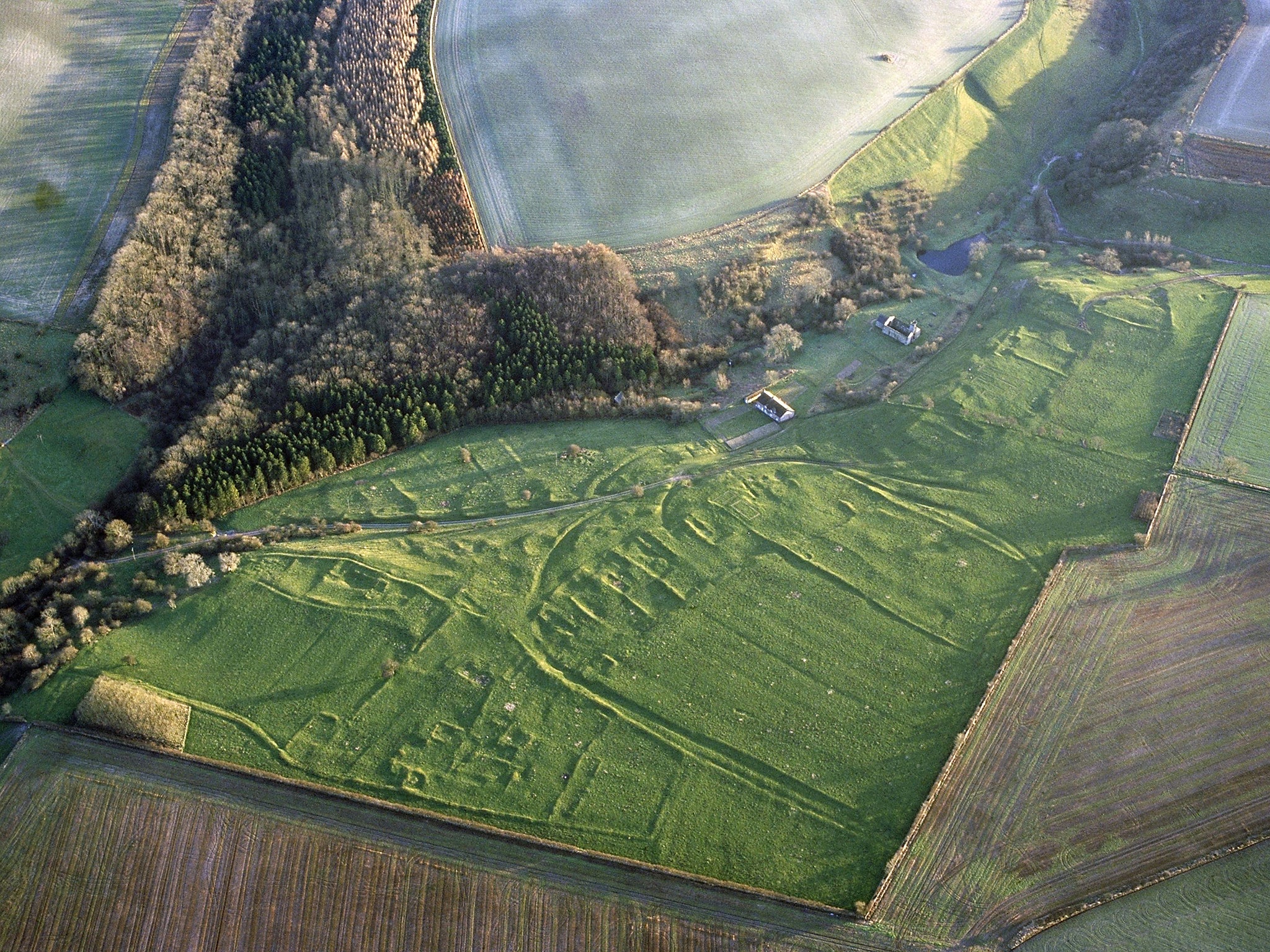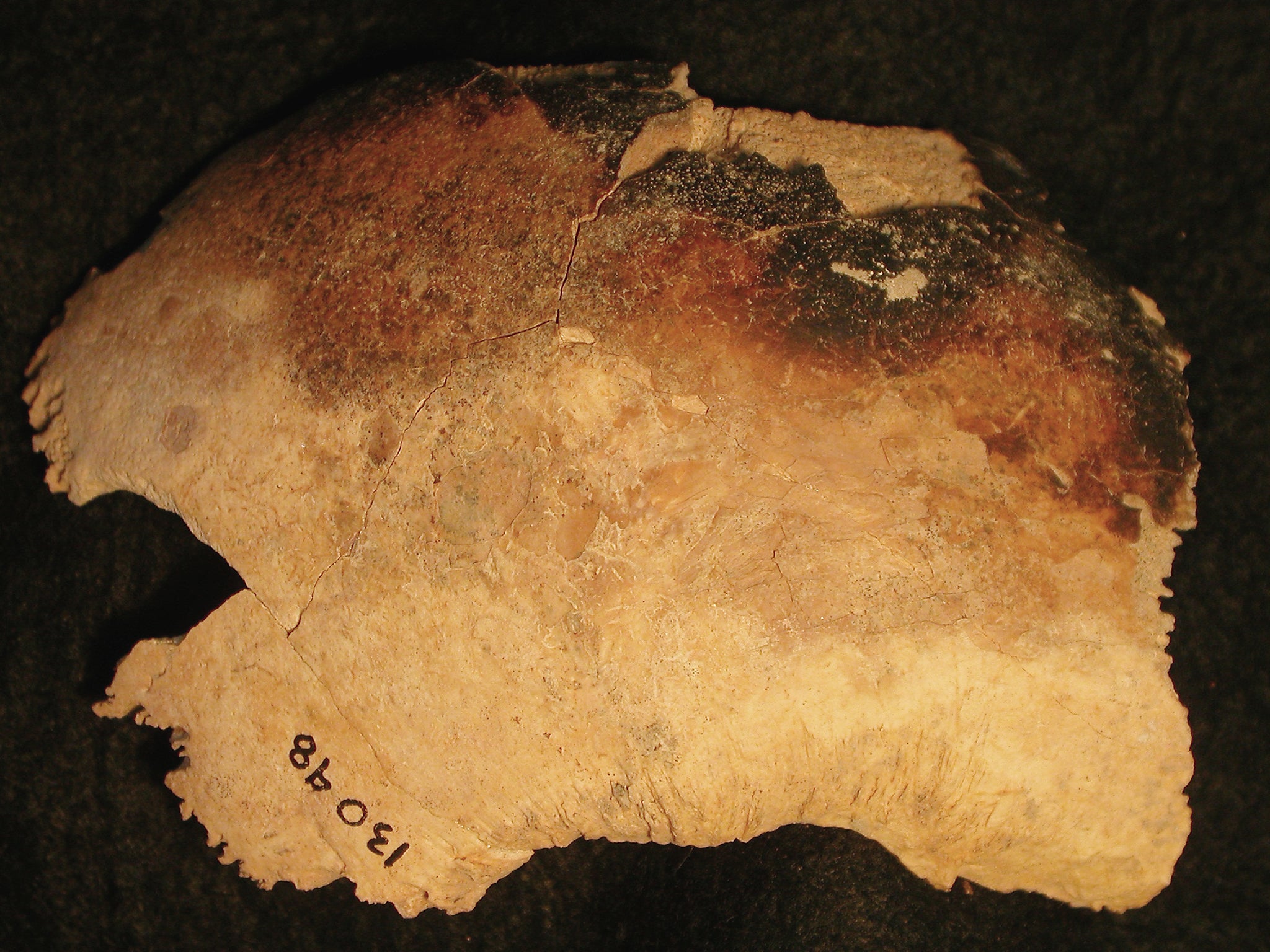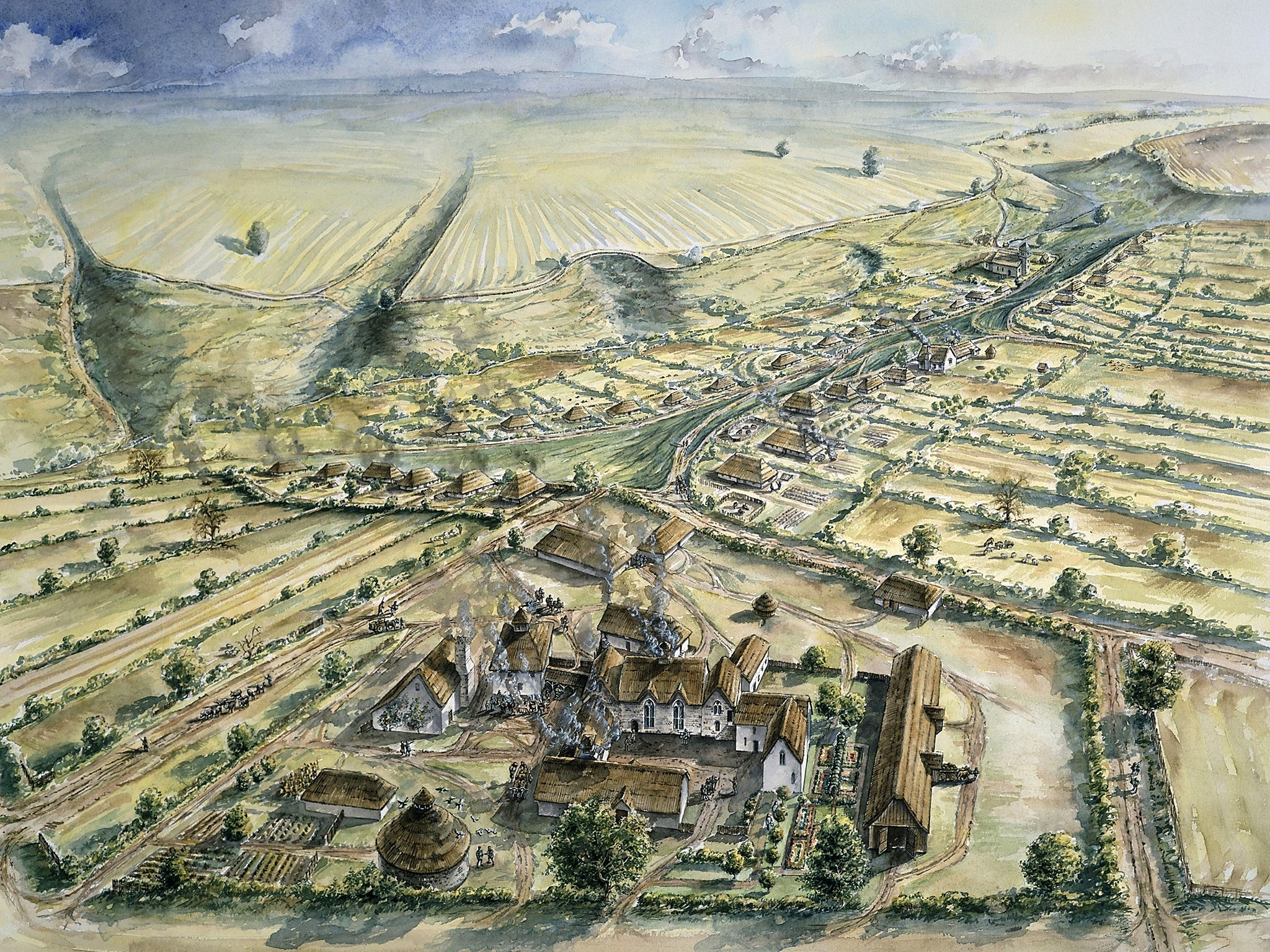Scientists uncover medieval remains of the first English 'living dead'
Villagers at the excavated site are thought to have believed that corpses of evil or vengeful individuals were capable of 'reanimating' in the ground and rising from their graves to attack or kill the living

Your support helps us to tell the story
From reproductive rights to climate change to Big Tech, The Independent is on the ground when the story is developing. Whether it's investigating the financials of Elon Musk's pro-Trump PAC or producing our latest documentary, 'The A Word', which shines a light on the American women fighting for reproductive rights, we know how important it is to parse out the facts from the messaging.
At such a critical moment in US history, we need reporters on the ground. Your donation allows us to keep sending journalists to speak to both sides of the story.
The Independent is trusted by Americans across the entire political spectrum. And unlike many other quality news outlets, we choose not to lock Americans out of our reporting and analysis with paywalls. We believe quality journalism should be available to everyone, paid for by those who can afford it.
Your support makes all the difference.New scientific research suggests that our medieval ancestors were terrified of the living dead – reanimated corpses which would in popular culture today be dubbed revenants or vampires.
Scientists from Historic England and the University of Southampton have completed a study of human bones from a medieval Yorkshire village which strongly suggests that they were from individuals regarded by their peers as revenants. The scientific analysis has revealed that the individuals’ skeletal remains had been deliberately mutilated, decapitated and burned shortly after death.
It is the first time in Britain that such skeletal evidence of a probable medieval belief in revenancy has been found
The scientific work, carried out on 11th- to 13th-century human bones from the long-deserted village known as Wharram Percy is particularly important because it appears to confirm historical accounts of such beliefs.
Many people in medieval England believed that corpses of evil or vengeful individuals were capable of "reanimating" in the ground and then rising from their graves to attack or harm or even kill the living. Historical accounts from Britain and Ireland tell of fear of revenants in general, while some accounts from Scotland and Ireland (and one from England) also hint at revenant blood-sucking – a fear linked more specifically to vampiric aspects of the revenant tradition.

The Historic England and University of Southampton scientists analysed 137 disarticulated human bones, representing at least 10 individuals – including around three adult females, at least two adult males, a teenager (aged around 15 to 17) and two young children (aged 2 to 4). The evidence in the scientific study – led by Historic England’s human-skeletal biologist, Dr Simon Mays – indicates that the corpses were subjected to a series of actions designed almost certainly to prevent them rising from their graves.
Fearful villagers appear to have deliberately broken the limbs of the dead, probably with stones or hammers. They had then used knives to decapitate the individuals, perhaps to deprive them of sight and thought, and then finally burnt them, probably to destroy at least some of their flesh and therefore make physical resurrection less likely.
It is known that medieval folk belief held that corpses could only reanimate and become revenants in the short period between death and decomposition. Skeletons could not become revenants. Only fully fleshed intact corpses could do so. The head of one of the "revenants" had also been mutilated with a sword or axe.
Only a small number of medieval English revenant stories were ever recorded historically – and they therefore almost certainly represent a tiny percentage of the total number of related events that must have occurred in this country in medieval times. The new scientific evidence therefore adds very significantly to our knowledge on the subject.
Whereas the very sparse (and therefore extremely incomplete) English historical record of such cases suggests that virtually all revenants were male and adult, the new scientific analysis reveals that they were in fact of both sexes and all age groups.
Significantly, although not hinted at by English historical accounts, it is in line with northern European folklore traditions in general.
In northern Europe, including Scotland, there are, for instance, folklore traditions suggesting a huge fear of children who had been murdered or had died following unfair or wrongful treatment – and the new scientific evidence therefore suggests that was probably the case in medieval England too. The fear of revenants almost certainly had its roots in Dark Age or even prehistoric times.
Medieval people believed that evil or vengeful individuals could rise from the dead to attack the living and spread disease and death. It was a very real fear when epidemics and sudden death were commonplace and lives were typically much shorter than they are now.

A 12th-century Yorkshire cleric, William of Newburgh, described, for instance, an evil man, who, escaping from justice, fled the city of York, but then died and rose from his grave. Pursued by a pack of barking dogs, he wandered through courtyards and houses while everyone locked their doors. Finally the townspeople decided to put an end to the threat by digging up his dead body, mutilating it and burning it. The frequent connection, in some European folklore, between blood and revenants is amply demonstrated by Newburgh’s account of what happened when the townspeople opened the grave.
They “laid bare the corpse, swollen to an enormous corpulence, with its countenance beyond measure turgid and suffused with blood. The young men, however, spurred on by wrath, feared not, and inflicted a wound upon the senseless carcass, out of which incontinently flowed such a stream of blood, that it might have been taken for a leech filled with the blood of many persons”.
The fear of revenants (including blood-sucking ones – and ones that sexually attacked women in their bedrooms at night) is the stuff of dark mythology and Victorian gothic popular novels – but were also very real fears which drove aspects of real human behaviour in the medieval period. As such, it also posed challenges for both religious and civil authorities which had to wrestle politically, theologically and culturally as to how to handle and contain those volatile fears.
Speaking about the analysis of the mutilated and burnt Wharram Percy bones, Dr Mays described the importance of the research. “It shows how archaeology can provide crucial details that the historical record can’t,” he said.
The analysis of the bones is being published on Monday in the Journal of Archaeological Science Reports.
The deserted medieval village of Wharram Percy is in the care of English Heritage and is open to the public free of charge. Visitors can see the earthwork remains of the village’s streets and house sites – and can also see the settlements now-long-ruined church.
Join our commenting forum
Join thought-provoking conversations, follow other Independent readers and see their replies
Comments